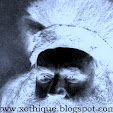
In 1987, in Eugene, Oregon, I once met an individual, a poet, through friends in common. He mentioned Arthur Machen's Hieroglyphics as one of his prime sources of inspiration. I had read a fair number of Machen's stories by then (and later read his visionary novel, The Hill of Dreams), but Hieroglyphics remained unavailable. (No doubt if I'd made the effort, I could have checked out a copy, courtesy of interlibrary loan, or found a way to order the book; even in that time when the early incarnation of the World Wide Web was limited to a few military and university channels.) I ultimately procured a copy in recent times, & soaked up the words. In Hieroglyphics, Machen referenced a range of works, including Dickens' The Pickwick Papers, Cervantes' Don Quixote, Rabelais' Gargantua and Pantagruel (and figures such as William Wordsworth, Bach, Jane Austen, Poe and others also appear); "... should Mr. Pickwick's overdose of milk-punch prove, ultimately, a clue to the labyrinth of mystic theology." (Hieroglyphics, p. 119) George Eliot, William Thackeray and others, appear unfavorably as examples of didactic or conventional literature. "...I may say at once that to the literalist, the rationalist, the materialist critic, the problem is quite insoluble." (p. 115) In a period after photographers such as Vivian Maier and Garry Winogrand, Machen's thoughts on cameras and film (incorporated into some literary points), are at times questionable (yet nuanced): he states, for example: "... the end (of photography) is to portray the surface of life, to make a picture of the outside of things." (p. 73)
Present, sometimes in subtle form, was a sort of mysticism I expected from The Hill of Dreams, in which Lucian Taylor enters a enraptured state, by merely reading single lines or phrases of Coleridge's or Poe's poetry. A singular, discursive work, Machen threaded an effective case for an ecstatic literature, throughout Hieroglyphics. -- JF
Source for quotes: Hieroglyphics: A Note Upon Ecstasy in Literature, by Arthur Machen. London: Martin Secker, 1912.

No comments:
Post a Comment